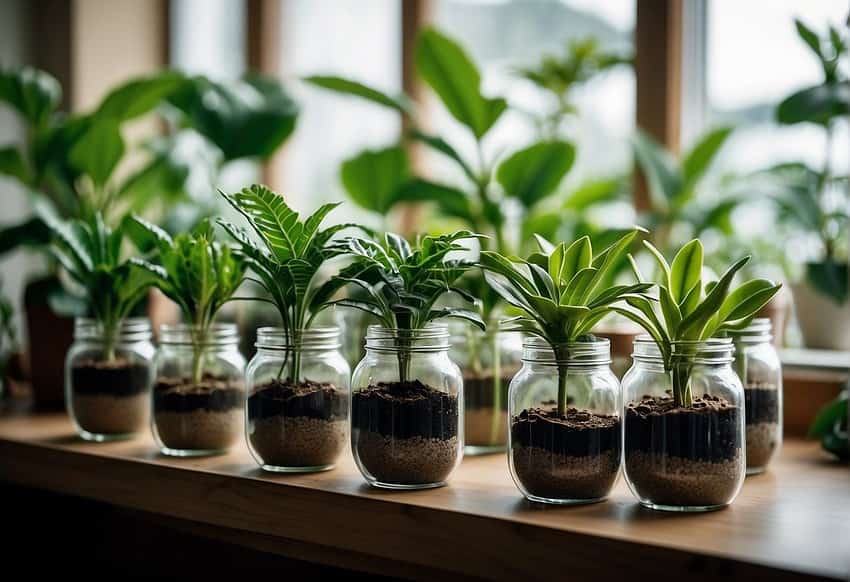Creating new houseplants from cuttings is a great way to expand your indoor garden without spending a lot of money. Cuttings are a part of the plant that is removed from the parent plant and placed in a growing medium to develop roots and grow into a new plant. This method of propagation is easy, cost-effective, and a great way to share your plants with friends and family.
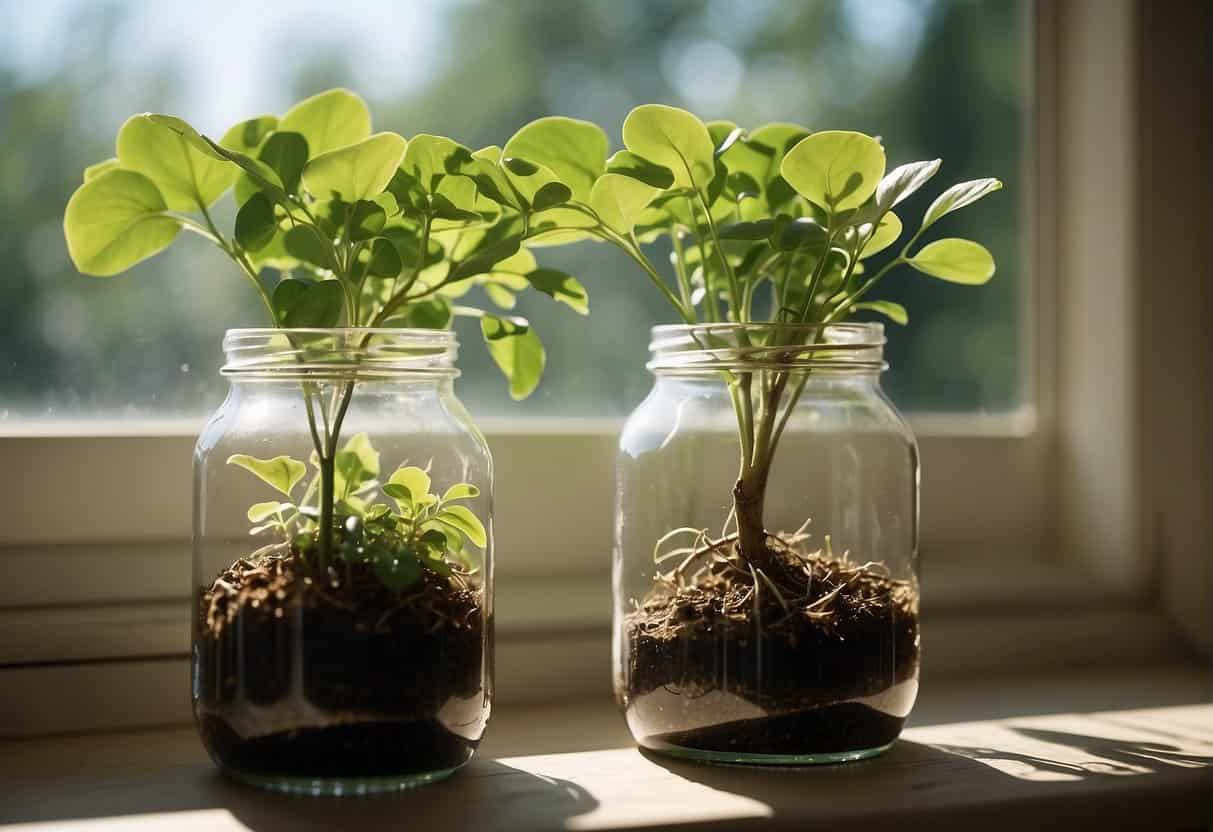
There are many different types of plants that can be propagated from cuttings, including succulents, herbs, and even some trees. The process for each plant can be slightly different, but the basic steps are the same.
The cutting should be taken from a healthy, mature plant and should be free from any diseases or pests. The cutting should also have at least one node, which is where the leaves and stems meet, as this is where the roots will develop.
Once the cutting is taken, it should be placed in a growing medium, such as soil or water, and kept in a warm, humid environment until roots start to develop. With a little patience and care, the cutting will grow into a new, healthy plant.
Understanding Plant Propagation
Plant propagation is a process of creating new plants from existing ones. It is a fun and easy way to turn one parent plant into multiple baby plants. It is an essential skill for gardeners, and it is especially useful for houseplant enthusiasts.
Types of Propagation
There are three main ways to propagate plants: planting seeds, dividing plants, and taking cuttings.
Planting seeds is the most common way to grow new plants, but it can be time-consuming and requires patience. Dividing plants is another method of propagation that works well for plants with multiple stems or clumps of roots.
Taking cuttings is the most popular method of propagation for houseplants. It involves taking a stem or leaf cutting from a parent plant and rooting it in water or soil.
Benefits of Propagating Houseplants
Propagating houseplants has many benefits. Firstly, it allows you to create new plants for free. Secondly, it helps to maintain the health and vigor of the parent plant. Thirdly, it allows you to share your plants with friends and family. Finally, it is a great way to expand your collection of houseplants without spending a lot of money.
Preparing for Propagation
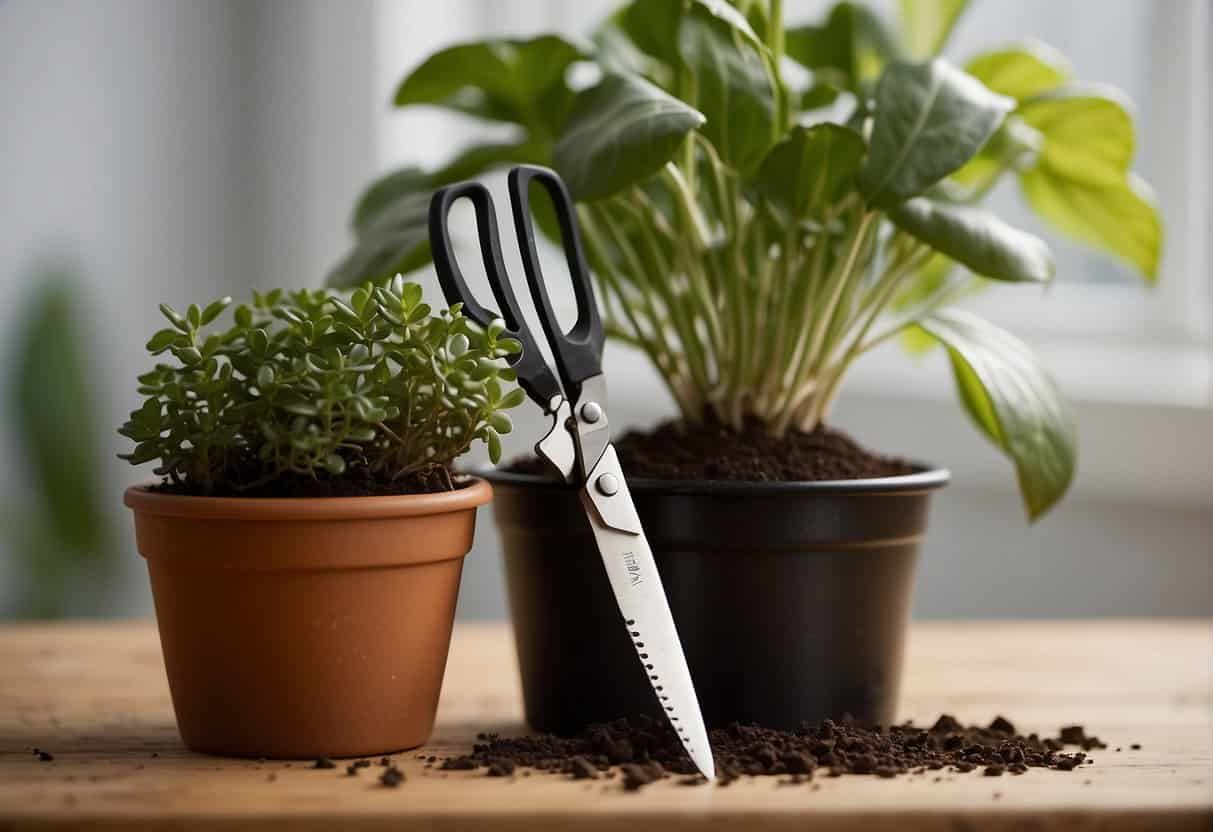
Selecting the Right Plant Species
Before propagating a houseplant from cuttings, it is important to select the right plant species. Not all plants can be propagated from cuttings, and some are easier than others.
Common houseplants that can be propagated from cuttings include pothos, spider plants, and snake plants. It is important to choose a healthy mother plant with no signs of disease or damage.
Tools and Materials Needed
To propagate a houseplant from cuttings, a few tools and materials are needed.
The following tools are recommended to make clean cuts: a sharp pair of scissors, a floral knife, or a small pocket knife.
It is also important to have a clean and sterilized container to hold the cutting. A rooting hormone can be helpful to encourage root growth, but it is not necessary.
In addition, a soil mix that drains well can be used to root the cutting. A mixture of perlite, vermiculite, and peat moss is a good option.
Creating a Sterile Environment
Creating a sterile environment is important to prevent the cutting from being exposed to harmful bacteria or fungi.
Before taking the cutting, make sure to wash your hands thoroughly and sterilize your tools with rubbing alcohol or a bleach solution.
It is also important to keep the container and soil mix clean and sterile. Avoid touching the cutting with your hands and use gloves if necessary.
Propagation Techniques

Several different techniques are used to propagate new houseplants from cuttings. Each method has its own advantages and disadvantages, and some are better suited for certain types of plants than others. Here are the most common propagation techniques:
Stem Cuttings
Stem cuttings are the most common method of propagating houseplants. This technique involves taking a cutting from the stem of the plant and rooting it in soil or water until it develops roots and can be planted in its own pot.
Stem cuttings are best used for fast-growing, multi-stemmed plants such as pothos, dracaena, and begonia.
To take a stem cutting, use a sharp, clean pair of scissors or pruning shears to cut a 4 to 6-inch section from the tip of the main stem or side branch, just below a node (where the leaf and stem meet).
Remove any leaves from the bottom inch of the stem, and dip the cut end in rooting hormone to encourage root growth.
Place the cutting in a pot filled with moist potting soil and keep it in a warm, bright location out of direct sunlight.
Leaf Cuttings
Leaf cuttings are used to propagate certain types of plants, such as succulents and African violets. This technique involves removing a leaf from the plant and rooting it in soil or water until it develops roots and a new plant begins to grow from the base of the leaf.
To take a leaf cutting, carefully remove a healthy leaf from the plant, making sure to include a small section of the petiole (the stem that attaches the leaf to the plant).
Dip the cut end in rooting hormone and place the cutting in a pot filled with moist potting soil. Keep the pot in a warm, bright location out of direct sunlight and mist the cutting with water every few days to keep it moist.
Division
Division is a propagation technique used for plants that grow in clumps or have multiple stems. This technique involves separating the plant into smaller sections and replanting each section in its own pot.
Division is best used for plants such as snake plant and monstera.
To divide a plant, carefully remove it from its pot and gently separate the roots into smaller sections, making sure that each section has its own stem and leaves.
Replant each section in its own pot filled with fresh potting soil and water thoroughly.
Air Layering
Air layering is a propagation technique used for plants with thick stems, such as cacti and some types of ficus. This technique involves creating a small wound in the stem of the plant and encouraging the plant to grow new roots at that location.
Once the roots have developed, the stem can be cut and planted in its own pot.
To air layer a plant, make a small cut in the stem of the plant, just below a node.
Wrap the cut area with moist sphagnum moss and cover it with plastic wrap to keep it moist.
Once roots have developed, cut the stem below the root ball and plant it in its own pot filled with fresh potting soil.
Rooting and Initial Care

Using Rooting Hormones
To improve the chances of successful rooting, using rooting hormones is recommended.
Rooting hormones are available in powder or liquid form. The powder form is the most commonly used type. It is easy to use and can be applied directly to the cut end of the stem.
Dip the cut end of the stem into the powder and tap off any excess. Be sure to use a clean container to avoid contamination of the hormone powder.
Planting Cuttings
After applying the rooting hormone, the cutting can be planted in soil or a potting mix.
Use a small pot or container filled with moist soil or potting mix. Make a hole in the soil with a pencil or similar tool and insert the cutting.
Gently press the soil around the cutting to ensure good contact between the soil and the stem.
Providing Optimal Conditions
To ensure successful rooting, it is essential to provide optimal conditions.
High humidity and a warm temperature are necessary for the cutting to root properly.
Cover the pot or container with a plastic bag to create a humid environment. Place the pot in a warm location, preferably with bright, indirect light.
A heat mat can be used to maintain a constant temperature, which should be around 70-75°F.
Once the cutting has rooted, remove the plastic bag and gradually acclimate the plant to lower humidity and brighter light.
Water the plant as needed, but avoid overwatering, which can lead to root rot. With proper care, the new plant will grow and thrive.
Monitoring and Troubleshooting
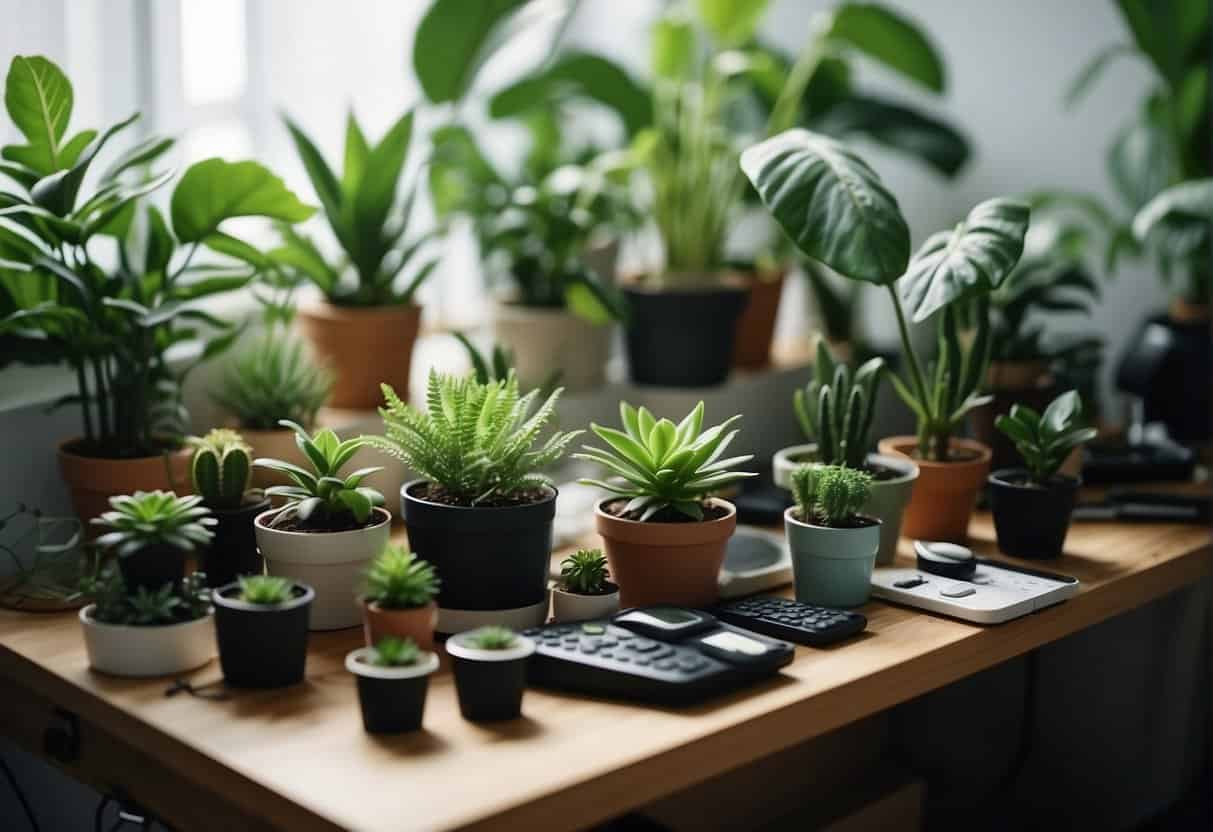
Identifying New Growth
After a few weeks, new growth should start to appear. This is a sign that the cutting has successfully rooted and is growing.
New growth can be identified by the appearance of small leaves or buds. It is important to monitor the new growth to ensure that it is healthy and growing properly.
Dealing with Common Issues
While propagating houseplants from cuttings is a relatively easy process, some common issues can arise. Here are some troubleshooting tips to help you deal with these issues:
Rot
If the cutting is not growing and starts to turn brown or black, it may be suffering from rot. This can happen if the cutting is overwatered or if the soil is too moist.
To prevent rot, make sure the soil is well-draining and the cutting is not sitting in standing water. If rot has already set in, you may need to take a new cutting and start the process over again.
Disease
Disease can also be a problem when propagating houseplants from cuttings. If you notice any signs of disease, such as yellowing or wilting leaves, it is important to act quickly.
Remove any affected leaves or stems and make sure to sterilize your tools before using them again. You may also need to treat the cutting with a fungicide to prevent the spread of disease.
Water Loss
If the cutting is losing too much water, it may wilt or die. This can happen if the cutting is not getting enough water or if the air is too dry.
To prevent water loss, make sure the soil is moist but not waterlogged, and consider using a humidity dome or misting the cutting regularly.
Fertilization
While it may be tempting to fertilize the cutting right away, it is important to wait until it has established roots and new growth. Once the cutting is growing well, you can start fertilizing it with a balanced houseplant fertilizer.
Be sure to follow the instructions carefully and avoid over-fertilizing, which can damage the plant.
Transplanting and Acclimatization
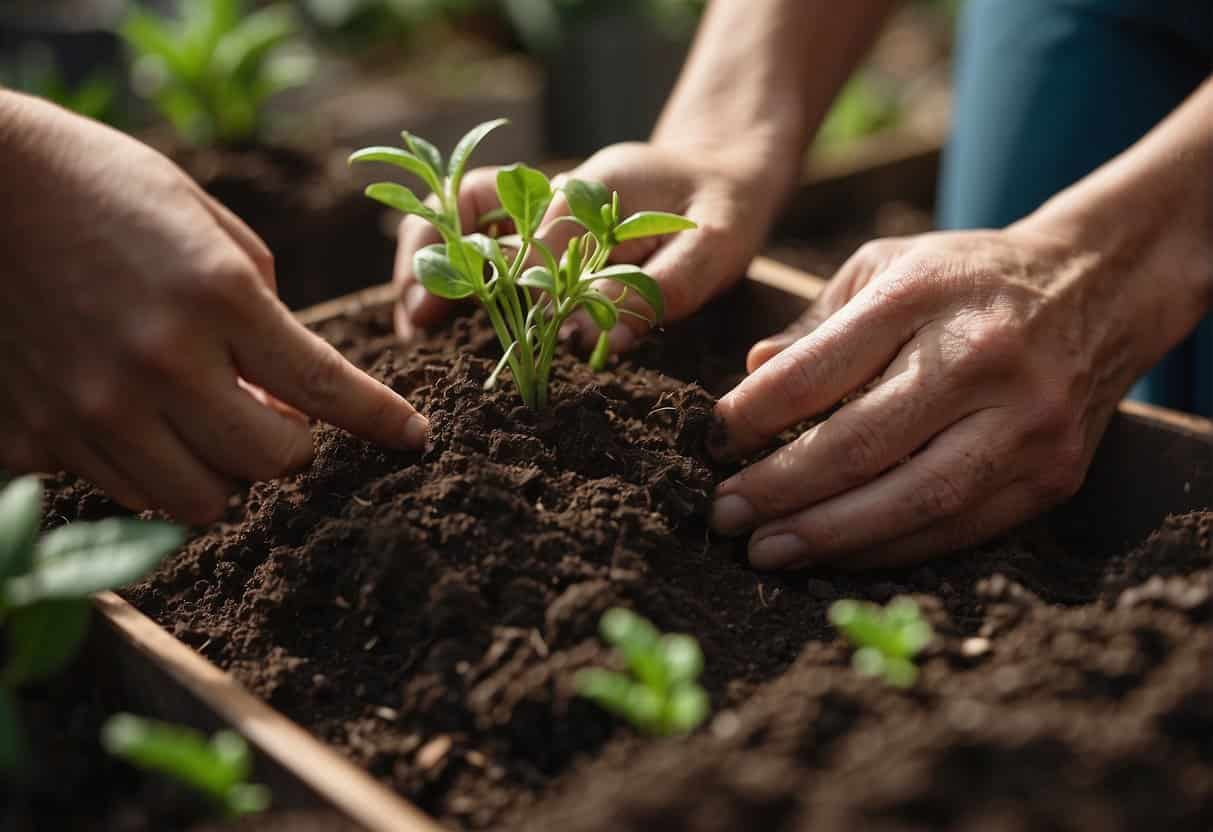
When to Transplant
Once the roots have grown to a sufficient length, it’s time to transplant the cutting to a larger pot. This is typically done when the plant has outgrown its current container or when the roots have filled the pot.
A good rule of thumb is to transplant when the roots have filled about two-thirds of the pot and are visible through the drainage holes.
Transplanting Techniques
To transplant the cutting, gently remove it from the current pot, taking care not to damage the root ball. If the roots are tightly bound, use a clean, sharp knife to make a few shallow cuts around the root ball to encourage new growth.
Place the cutting in a larger pot with fresh potting soil, making sure the root ball is level with the rim of the new pot. Fill in any gaps around the root ball with additional potting soil, and gently tamp it down to remove any air pockets.
Acclimatizing New Plants
After transplanting, it’s important to acclimatize the new plant to its new environment. This involves gradually exposing the plant to more light and air to help it adjust to its new surroundings.
Start by placing the plant in a shaded area for a few days, gradually increasing the amount of sunlight it receives each day. It’s also important to make sure the plant is getting enough water, but not too much, as overwatering can lead to root rot.
To provide support for the new plant, use stakes or trellises to keep it upright as it grows. This is especially important for plants with long, thin stems that are prone to bending or breaking.
Growing Your Plant Collection
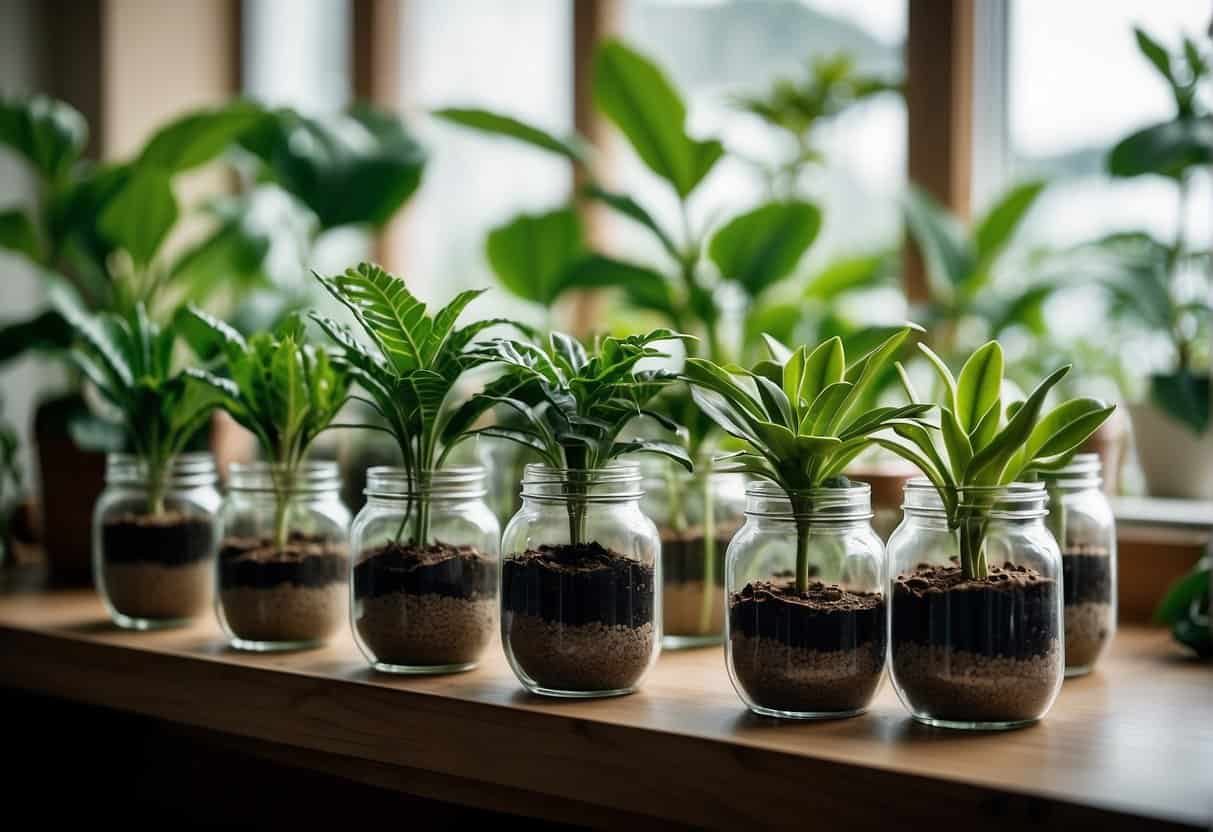
Expanding your collection of houseplants is an exciting endeavor, but it can also be costly. Luckily, propagating houseplants from cuttings is an easy and cost-effective way to create new plants for your collection.
Expanding Your Collection
Propagating houseplants from cuttings is a great way to expand your collection without spending a lot of money. By taking cuttings from your existing plants, you can create new plants that are genetically identical to the parent plant.
This means that you can create a whole new collection of plants that have the same characteristics as your favorite plants.
To propagate a plant from a cutting, you will need to take a stem cutting from the parent plant and root it in soil or water. The process is relatively simple and can be done with a variety of different plant species.
Sharing Cuttings with Others
Sharing cuttings with friends and family is a great way to spread the joy of houseplants. By giving away cuttings from your favorite plants, you can help others start their own collection of plants.
It’s also a great way to connect with other plant enthusiasts and share tips and tricks for propagating houseplants.
When sharing cuttings with others, make sure that the cuttings are healthy and disease-free. You should also provide instructions on how to care for the cuttings to ensure that they are successful in rooting and growing into healthy plants.
Advanced Propagation Tips
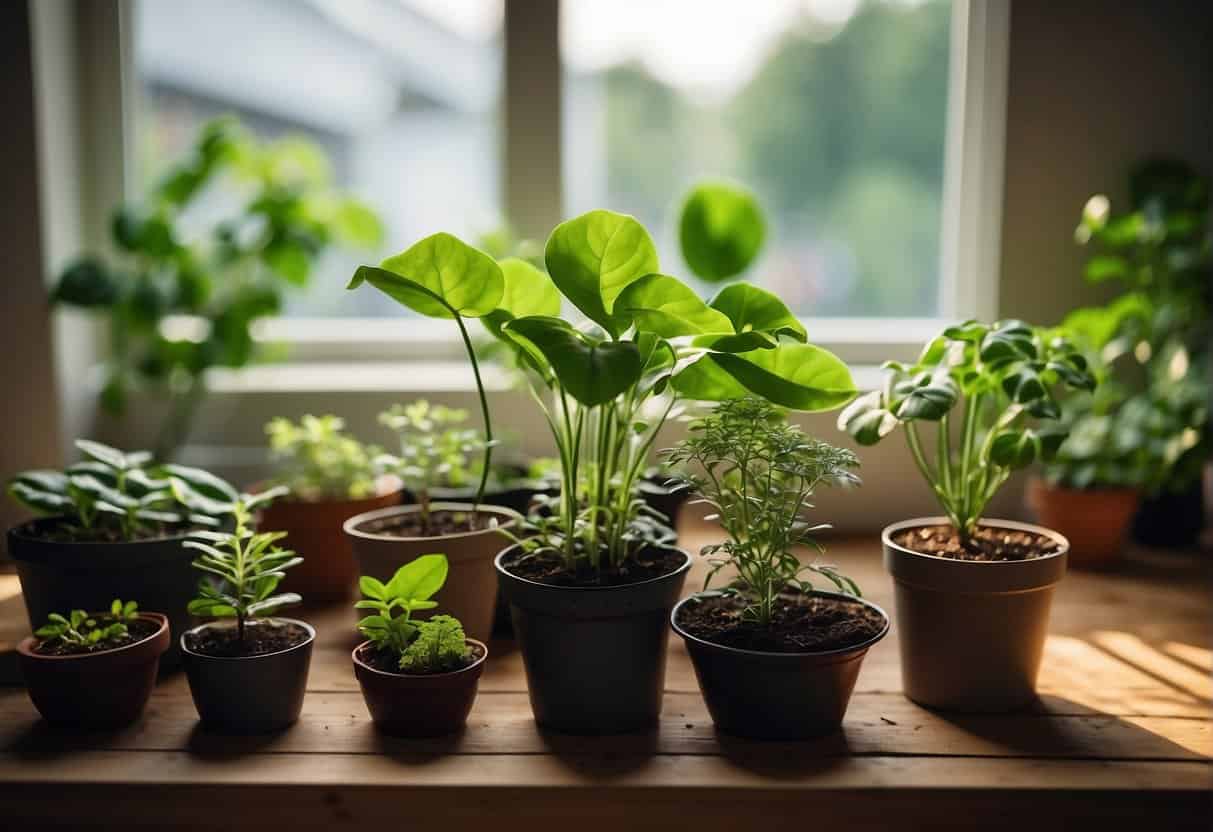
Experimenting with Difficult Species
While propagating houseplants from cuttings is generally an easy and successful process, some species can be more challenging to root than others. For example, plants with woody stems or succulents may require a different propagation technique than soft-stemmed plants.
To experiment with different propagation techniques, consider trying air layering or grafting. Air layering involves wounding a section of stem and then covering it with a rooting medium, while grafting involves attaching a stem cutting to the rootstock of a different plant.
Both of these techniques can be more challenging than traditional stem cutting propagation, but they can also be more effective for certain species.
Enhancing Propagation Success
There are several factors that can influence the success of houseplant propagation from cuttings. One important factor is the rooting medium used.
While many gardeners use a mix of perlite and peat moss, other options include sand, vermiculite, or sphagnum moss.
Another factor to consider is the use of rooting hormones, such as IBA or NAA. These hormones can help stimulate root growth and improve the success rate of propagation.
It is important to follow the instructions carefully when using rooting hormones, as too much can damage the cutting.
Finally, keeping the cutting moist and providing the right amount of light can also enhance propagation success.
One trick is to insert chopsticks into the rooting medium to provide support for the cutting without disturbing the roots.
Frequently Asked Questions

What are the best houseplants to propagate from cuttings?
Many houseplants can be propagated from cuttings, but some of the easiest and most popular ones include pothos, spider plants, snake plants, and philodendrons. These plants are hardy and can tolerate a variety of growing conditions, making them ideal for beginners.
Can you propagate any plant in water, and if so, which ones?
Not all plants can be propagated in water, but many can. Some of the best plants to propagate in water include pothos, spider plants, philodendrons, and begonias.
However, it is important to note that some plants may not root as well in water as they do in soil.
What is the ideal time of year to start propagating houseplants?
The best time to start propagating houseplants is in the spring or early summer when the plants are actively growing. This is when the plants are producing new growth, which is the best material to use for cuttings.
What are the steps to successfully propagate plants from cuttings?
The basic steps to propagate plants from cuttings are as follows:
- Choose a healthy plant and select a stem with new growth.
- Cut the stem just below a node.
- Remove the lower leaves from the stem.
- Dip the cut end of the stem in rooting hormone powder.
- Plant the stem in a pot filled with moist soil or place it in a jar of water.
- Keep the soil or water moist and place the plant in a bright, indirect light.
- Wait for the plant to root and start growing.
Is it better to propagate plant cuttings in water or soil?
Both methods can be successful, but some plants root better in soil and some in water. In general, plants that prefer a moist environment, such as pothos and philodendrons, tend to root better in water. Plants that prefer a drier environment, such as cacti and succulents, tend to root better in soil.
What potential challenges might arise when propagating new houseplants from cuttings?
Some potential challenges when propagating new houseplants from cuttings include:
- The cutting may fail to root or may take a long time to root.
- The cutting may rot if it is kept too wet.
- The cutting may dry out if it is kept too dry.
- The cutting may be attacked by pests or diseases.
To minimize these challenges, it is important to choose healthy plants, use clean tools, and provide the right growing conditions for the plant.


